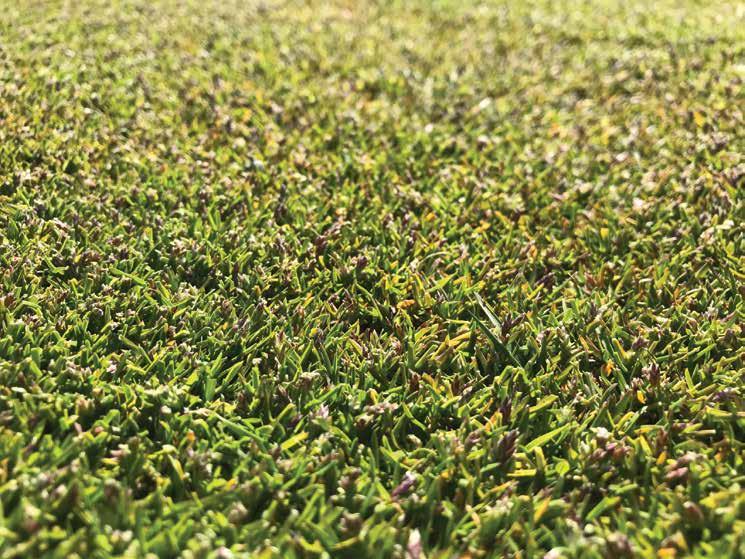
2 minute read
WETTING AGENT TECHNOLOGIES
Reserve Block Co-Polymer - 1995 the amount of plant available water. Within the category of block co-polymer there are; straight block co-polymer to enhance water movement into the rootzone and reverse block co-polymer (retainer) which enhance moisture retention in the rootzone. Blends of both, straight and reverse block co-polymer are now commonplace within the industry, which aim to utilise the benefits of both technologies.
Wetting agents should be used in accordance with the desired outcome as not all wetting agent products utilise the same technologies. Similarly, you may not necessarily want to use the same wetting all year round. Wetting agents can be split into two groups, anionic or nonionic. The anionic wetting agents are the original technology developed in the 1950's which are negatively charged. These can cause dispersion within clay particles and have negative impacts in soil.
Straight Block Co-Polymer - 1996
Straight Block & Alkylpolyglycoside blend - 2000
Modified Block Co-Polymer - 2004
Aquatrols Mission
Aquatrols is committed to pioneering new methods that advance soil and plant health for turf. We take seriously our responsibility to deliver products that will enhance water use, thereby helping protect the future of our water environment.
The nonionic wetting agent group can be further split into two more generic groups. Polyoxyethylene (POE), which also originated around the 1950's and a newer group of block co-polymers developed in the 1990's. Care should be taken when using products that utilise older technologies as issues of phytotoxicity can arise, depending on application rates, grass species and environmental conditions.
Block co-polymers are now commonly used and are safe on fine and sports turf areas. They help to reduce water repellence issues in rootzones and soils, improve soil water content and any month of the year on rough and fairway height of cut turf, at greens height it often kicks off seeding with a vengeance once we hit around 100GDD cumulative from January 1st (using a 6°C base temperature for the calculation). This number does vary between from a purely-temperature perspective, 2022 and 2023 are extremely closely-aligned. Below is a graph of the cumulative GDD from my default location at The Oxfordshire Golf Club, Thame using data from the Davis Vantage Pro2 6820 weather station on site. A big thanks to the course manager, Sean Wilson, for allowing me to use this data. are given the very different weather scenarios
Other products available include those containing Alkyl Polyglucosides which make use of a sugar molecule reacted with a fatty acid to reduce water repellence. These can be mixed with straight block co-polymers and are widely used in the turfgrass industry. Lastly there is the unique modified methyl capped block co-polymer which creates a thin film of water around the soil particle which reduces the ability of the soil to completely dry out, meaning low volumetric water content can be achieved without becoming hydrophobic. Determining what the goal is for your site in relation to water management and distribution is key to deciding which technologies are going to help you achieve it.
Readaboutthehighlysuccessful,DanishSeaScurvyhere (https://www.bbc.co.uk/news/uk-wales-21123964)
I have worked with Sean for over twenty years, and we know on his site that the annual Poa biotype starts seeding at around 100GDD cumulative starting from January 1st and the perennial at around 180GDD cumulative. When you look at the trace of the two years above, there are clear differences, but at these two GDD points, the dates are near identical.

In the past, this used to be the very end of April, start of May, but our warming winters are giving Poa annua a head start. Food for thought there I think when it comes to plant growth regulator timing.

Mark is well respected in the turfcare community and welcomes your questions. Send them to: editor@pitchcare.com










